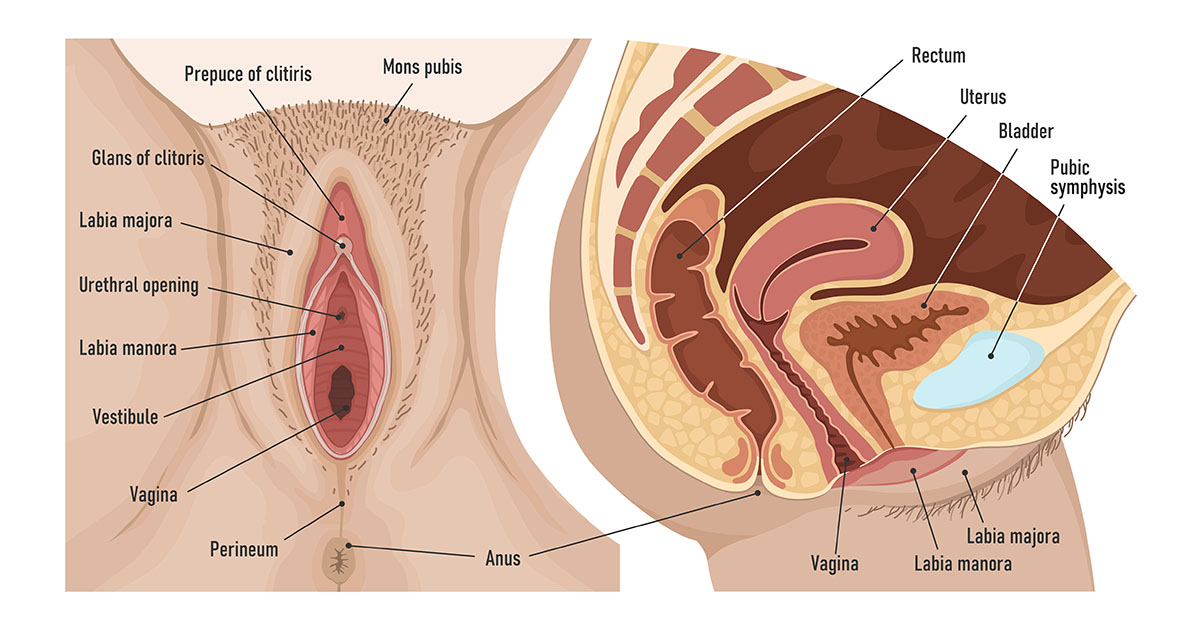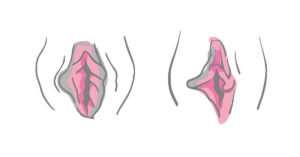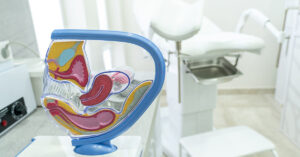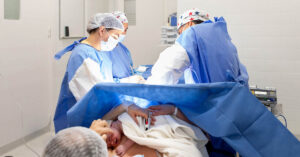Table of Contents:
- Overview
- What is a Designer Vagina?
- What Should a Designer Vagina Look Like?
- Overview of Designer Vagina Procedures and Recovery
- Reasons For Seeking a Designer Vagina
- Common Misconceptions of Designer Vagina
- Benefits of Designer Vagina Treatments
- Potential Risks and Important Considerations for Designer Vagina Procedures
- Alternatives to Surgery for Designer Vagina
- Professional Treatments For Designer Vagina
- References
There is a lot of public conversation and interest in the term “designer vagina.” At its core, this term and the dialogue refer not just to cosmetic enhancements but to the broader discussions about women’s health, autonomy, and the evolving standards of beauty.
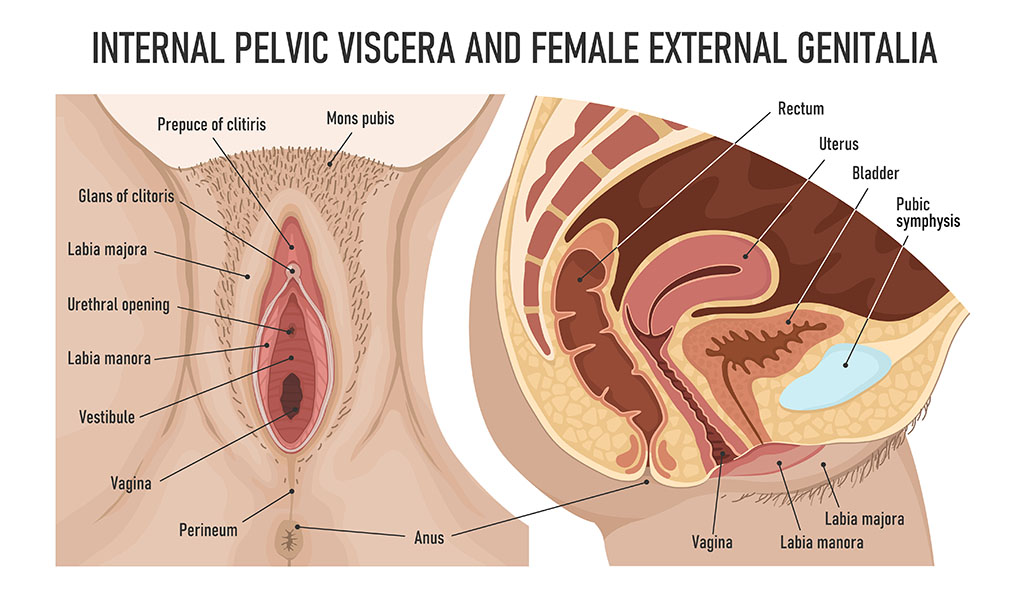
The concept of a “designer vagina” has led to many debates and, often, a lack of accurate information. This comprehensive article aims to shed light on the subject, offering a detailed explanation of what it truly means, the procedures involved, potential benefits and risks, and the reasons why women undergo this procedure.
What is a Designer Vagina?
Over the past two decades, there has been a growing trend of women seeking elective plastic surgery to reshape their labia and vagina, often driven by the pursuit of an idealized standard of feminine perfection.1

A designer vagina refers to a woman’s genital area that has undergone surgical enhancements or modifications to achieve a desired appearance or functionality. This can include a range of elective surgical procedures such as labiaplasty, vaginoplasty, and clitoral hood reduction, among others, designed to modify the appearance or function of the female genitalia.2
The concept of the “designer vagina,” as it is now commonly known, has its origin in gynecological surgeries initially developed to address specific medical concerns. Some of these procedures were primarily aimed at tightening the vaginal muscles and supporting tissues, often as a treatment for urinary incontinence. Additionally, following childbirth, when repairing vaginal and perineal tears or episiotomies, some doctors would add an extra stitch to tighten the vaginal entrance.
These early interventions laid the groundwork for what would eventually evolve into the elective cosmetic procedures we now associate with the term “designer vagina.” Over time, these surgeries shifted from being solely medically driven to being sought after for aesthetic and personal reasons, reflecting broader changes in societal attitudes toward women’s bodies and autonomy.
What Should a Designer Vagina Look Like?
A “designer vagina” is shaped by personal preferences and individual goals, as there is no universal standard of beauty or normalcy when it comes to the appearance of the genitalia.
Women seeking these procedures aim for a more symmetrical and refined look, particularly with the labia minora and labia majora. Many opt for labiaplasty to reduce the size of the labia minora so that it no longer extends beyond the labia majora, creating a smoother, more contoured appearance.
Other procedures, like clitoral hood reduction, may focus on reducing excess tissue around the clitoris for a neater look and potentially enhanced sensitivity. Ultimately, a “designer vagina” is about achieving a result that aligns with the woman’s own sense of comfort and attractiveness rather than fitting a specific mould.
Overview of Designer Vagina Procedures and Recovery
1. Labiaplasty
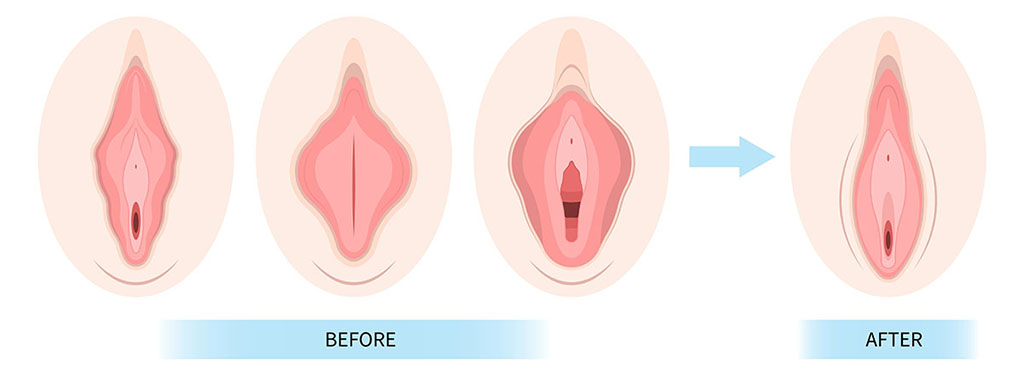
Labiaplasty is one of the most well-known genital procedures. It involves the surgical reduction or reshaping of the labia minora (the inner vaginal lips) and sometimes the labia majora (the outer vaginal lips).3 Women often opt for labiaplasty to address issues such as discomfort caused by enlarged or asymmetrical labia or to address aesthetic issues affecting their body image.
- Procedure Overview: Typically lasts 1-2 hours and is performed under local anesthesia with sedation, regional or general anesthesia. The surgeon removes excess tissue from the labia, using various techniques, such as trim or wedge resection, to achieve the desired shape and size. The area is then sutured for a refined appearance.
- Recovery: Swelling, bruising, and discomfort may last a few days during recovery after labiaplasty, but most women can return to normal activities within 1-2 weeks and to penetrative sexual activities within 4-6 weeks.
2. Vaginoplasty
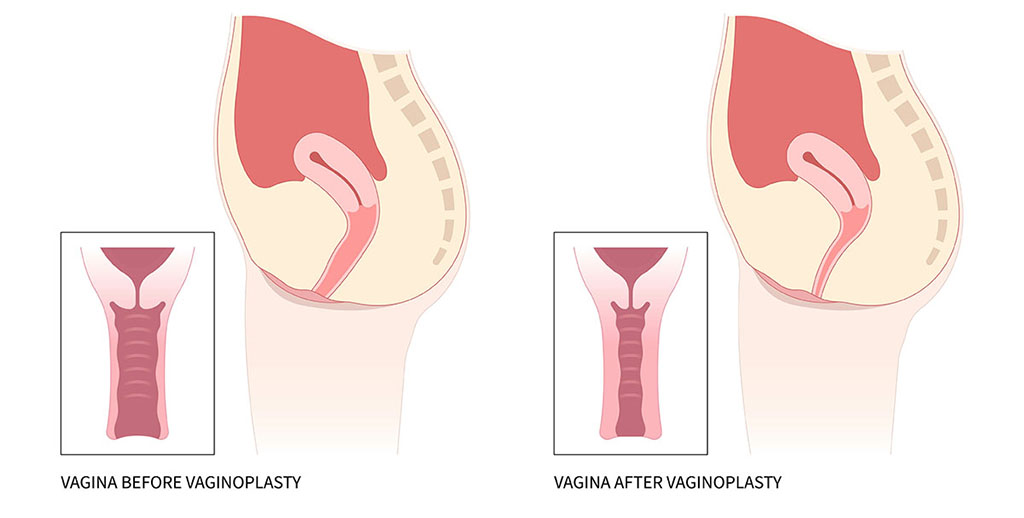
This is a surgical procedure designed to tighten the vaginal canal, which can become stretched or loose due to childbirth, ageing, or from other factors. The vaginoplasty procedure aims to restore the vaginal muscles and surrounding tissues to a more youthful state, improving both function and sensation during sexual intercourse. It can also be part of a broader surgical approach to enhance overall pelvic health.5
- Procedure Overview: Typically lasts 1-2 hours. Performed under general anesthesia or local anesthesia with sedation, depending on patient and surgeon preferences. The surgeon makes an incision either internally or externally, depending on the specific approach. Excess vaginal tissue is removed, and the remaining tissues are tightened and reshaped. In some cases, additional procedures may be combined, such as perineoplasty.
- Recovery: Initial recovery may involve swelling, bruising, and soreness. Most women return to normal activities within 2-4 weeks, with complete healing taking 6-8 weeks or longer.
Further, besides labiaplasty and vaginoplasty, there are other complementary procedures that women opt for to achieve the “designer vagina.”
3. Clitoral Hood Reduction
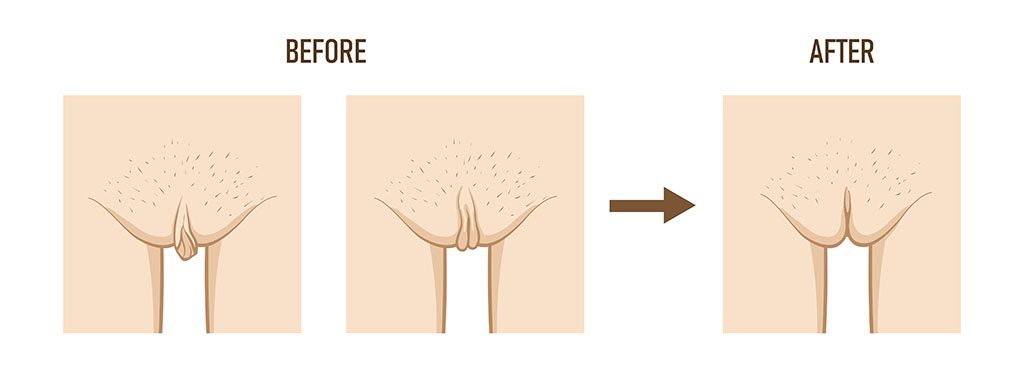
Clitoral hood reduction is a procedure that involves the removal of excess tissue surrounding the clitoris, known as the clitoral hood. This surgery is typically sought-after for both aesthetic and functional reasons. The surgery exposes more of the clitoris, making it more responsive to sexual stimulation. Additionally, the procedure can result in a more defined and aesthetically pleasing appearance.
- Procedure Overview: Typically lasts 30 minutes to 1 hour and is performed under local anesthesia with sedation or general anesthesia, depending on patient preference and the surgeon’s recommendation. The surgeon makes some incisions to remove excess clitoral hood tissue, then sutures the area for a more contoured appearance.
- Recovery: Post-operative swelling, bruising, and mild discomfort are common. Normal activities can generally be resumed within 1-2 weeks, with significant healing occurring in about 4-6 weeks.
4. Labia Fat Transfer
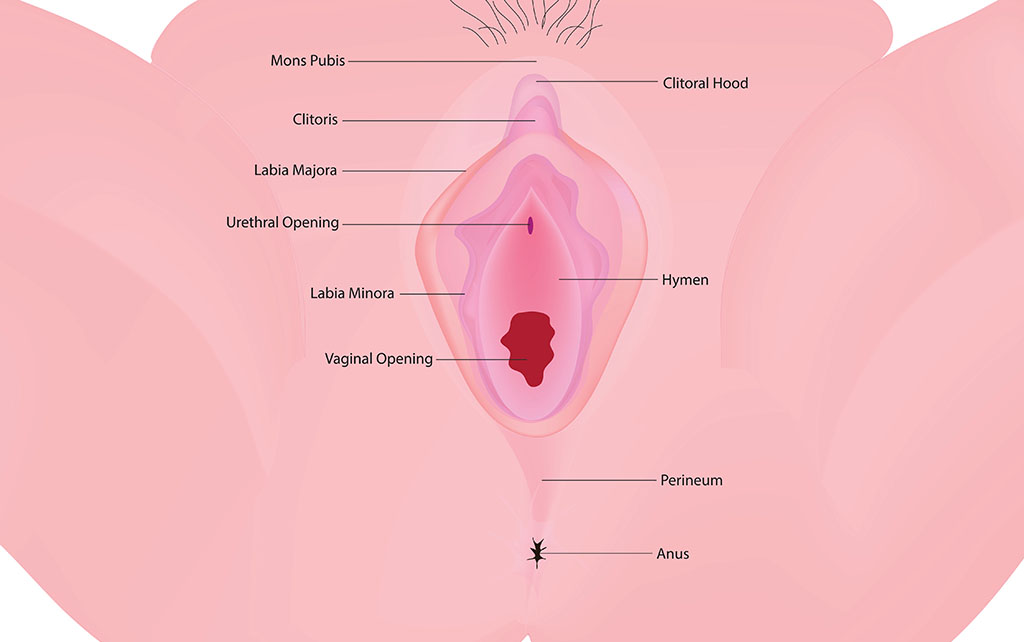
Labia fat transfer, also known as labia puffing, is a procedure that involves transferring fat from one part of the body to the labia majora, the outer vaginal lips. This procedure is sought-after by women who desire a fuller, more youthful appearance of the labia majora. The fat transfer can also help smooth out wrinkles and create a more aesthetically pleasing contour. This procedure is considered minimally invasive and is often combined with other cosmetic surgeries for a comprehensive rejuvenation of the genital area.4
- Procedure Overview: This procedure typically lasts about an hour and is performed under local anesthesia with sedation or general anesthesia. Using liposuction, fat is harvested from areas such as the abdomen or thighs. The extracted fat is then purified and injected into the labia majora to restore volume and improve contour.
- Recovery: Recovery involves managing swelling and bruising at both the donor and recipient sites. Most women can return to daily activities and work in a few days.
5. Monsplasty

Monsplasty, also known as a pubic lift, is a procedure that reduces and reshapes the mons pubis which is the area of fatty tissue above the pubic bone. This area can become enlarged or saggy due to factors such as aging, weight fluctuations, or childbirth. Monsplasty can enhance the appearance of the mons pubis, making it flatter and more toned, which can improve confidence and comfort, particularly when wearing tight clothing or swimwear.
- Procedure Overview: The surgeon makes an incision in the pubic area to remove excess fat and skin. The remaining tissue is then tightened and sutured for a refined contour. The procedure takes 1-2 hours and is conducted under general/regional anesthesia or local anesthesia with sedation.
- Recovery: Post-operative swelling, bruising, and discomfort are typical. It usually takes 1-2 weeks to resume normal activities, with full recovery in 6-8 weeks.
6. Hymenoplasty
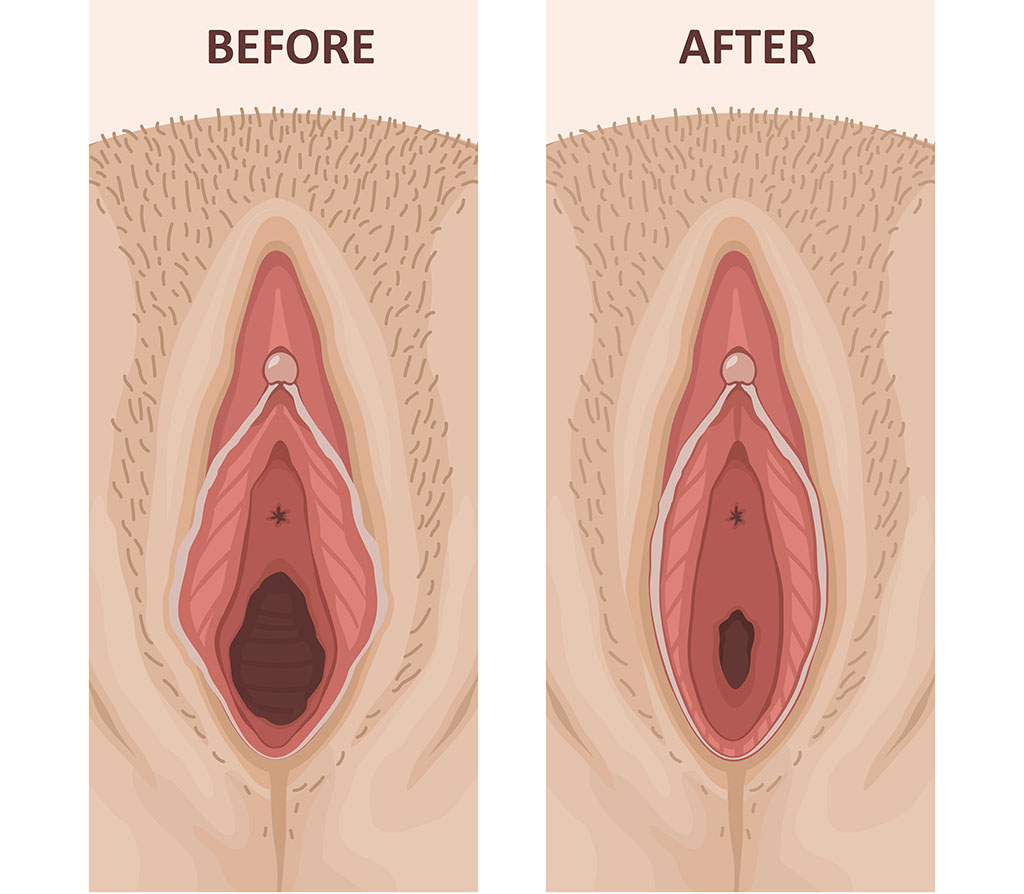
Hymenoplasty, or hymen reconstruction surgery, is a procedure that involves the surgical restoration of the hymen, a thin membrane that partially covers the vaginal opening. While the procedure is primarily symbolic, as the hymen can break for reasons unrelated to sexual activity, most women choose hymenoplasty to adhere to traditional or cultural expectations regarding virginity.6
- Procedure Overview: The surgeon reconstructs the hymen by suturing the remnants of the membrane or creating a new layer of tissue. The procedure typically lasts 30 minutes to 1 hour and is done under local or general anesthesia.
- Recovery: Mild pain, swelling, and discharge are common post-surgery. Recovery usually takes about 2-4 weeks, with full healing occurring in about six weeks.
7. Perineoplasty

Perineoplasty is a surgical procedure that repairs and tightens the perineum, which is the area between the vaginal opening and the anus. This procedure is often performed as part of vaginoplasty or after childbirth, where the perineum may have been stretched or torn. Perineoplasty aims to restore the perineum to its pre-childbirth state, improving both function and appearance. It can enhance sexual satisfaction by restoring the firmness of the area and reducing discomfort during intercourse.5
- Procedure Overview: The surgeon makes an incision in the perineal area, removes excess tissue, and tightens the remaining muscles and skin. The procedure may also involve repairing any associated tears or damage from childbirth. The surgery lasts about 1-2 hours and is conducted under local, regional or general anesthesia.
- Recovery: Mild to moderate pain, swelling, and bruising are typical. Most patients resume normal activities within 1-2 weeks.
These procedures, collectively referred to as “designer vagina” surgeries, offer women a range of options to address both functional and aesthetic concerns.
Reasons For Seeking a Designer Vagina
The decision to undergo a “designer vagina” procedure is often deeply personal, driven by a combination of medical and cosmetic factors. Understanding the underlying motivations can offer valuable insights into why more women are opting for these surgeries.

Medical Reasons
1. Alleviating Physical Discomfort
Many women undergo labiaplasty to relieve discomfort from enlarged or asymmetrical labia, which can cause irritation during activities, pain during intercourse, or chafing. Reducing the labia size can significantly improve comfort and quality of life.
2. Restoring Pre-Childbirth Anatomy
Childbirth can stretch or tear vaginal muscles. Vaginoplasty tightens the vaginal canal, enhancing sexual satisfaction and addressing issues like urinary incontinence by strengthening the muscles and tissues.
3. Addressing Urinary Incontinence
Urinary incontinence, often due to weakened pelvic floor muscles from ageing or childbirth, can be treated with vaginoplasty, which reinforces these muscles to reduce or eliminate incontinence.
4. Improving Hygiene
Enlarged labia can complicate hygiene, increasing infection risk. Labiaplasty reduces labia size, making hygiene easier and lowering the risk of irritation or infection.
5. Enhancing Sexual Pleasure
Vaginoplasty and clitoral hood reduction can enhance sexual pleasure by tightening the vaginal canal and increasing clitoral sensitivity, potentially improving sexual satisfaction for women and their partners.
Cosmetic Reasons
1. Achieving Aesthetic Goals
Many women choose “designer vagina” procedures for a more symmetrical or youthful appearance, influenced by cultural ideals. Labiaplasty often boosts confidence by creating a balanced and contoured look.
2. Counteracting the Effects of Ageing
Ageing can reduce skin elasticity in the genital area, affecting appearance and function. Vaginoplasty and labiaplasty help restore a youthful look and feel.
Psychological Reason
Boosting Self-Confidence
Body image impacts self-esteem. Women who feel self-conscious about their genital appearance may experience emotional challenges. A “designer vagina” procedure can boost confidence, making them feel more secure in their bodies.
Common Misconceptions of Designer Vagina: Myths and Misunderstandings

The concept of a “designer vagina” has gained significant attention over the years, but with that attention comes a host of myths and misunderstandings. These misconceptions often stem from cultural stigmas, misinformation, and the sensationalism surrounding cosmetic surgery. Addressing these myths is crucial for a clearer understanding of what these procedures truly entail and their impact on women’s health and well-being. Below are some examples.
1. Designer Vagina Procedures Are Only for Vanity
Many believe that these procedures are solely cosmetic and are sought by women who are overly concerned with appearance.
Reality: While aesthetic reasons are valid, many women also undergo these surgeries for significant medical reasons, such as alleviating discomfort, addressing postpartum complications, or resolving urinary incontinence. These procedures often improve both physical well-being and quality of life.
2. The “Perfect” Vagina Exists
There is a myth that there is an ideal or “perfect” appearance for female genitalia that all women should strive for.
Reality: Women’s bodies naturally vary, and there is no universal standard for what a vagina should look like. Designer vagina procedures focus on individual comfort, confidence, and satisfaction rather than conforming to unrealistic beauty standards.
3. These Procedures Are Dangerous or Unnecessary
Some assume that designer vagina surgeries are inherently risky or unnecessary, equating them with frivolous cosmetic enhancements.
Reality: When performed by qualified surgeons, these procedures are generally safe and can address important medical issues. For many women, these surgeries are far from unnecessary, offering solutions to chronic pain, discomfort, and functional impairments.
4. Recovery Is Long and Painful
A common belief is that recovery from vaginal cosmetic surgery involves a lengthy and painful process.
Reality: While there is a recovery period, it is often shorter and less painful than people think. With proper care, most women return to normal activities within a few weeks, and the benefits of the surgery typically outweigh the temporary discomfort.
5. These Procedures Are Only for Younger Women
It is often thought that only younger women seek these procedures, primarily for cosmetic reasons.
Reality: Women of all ages choose designer vagina surgeries, often to address age-related changes or to restore confidence and comfort. These procedures can benefit women at any stage of life, addressing both aesthetic and functional concerns.
By dispelling these misconceptions, we can understand the valid reasons women may have for choosing these surgeries, whether for medical, functional, or aesthetic purposes.
Benefits of Designer Vagina Treatments

1. Enhanced Physical Comfort
Reduction in Discomfort: Addresses physical discomfort caused by enlarged or asymmetrical labia, which can lead to irritation during activities like exercise, sexual intercourse, or when wearing tight clothing.
Improved Hygiene: Easier maintenance of personal hygiene, reducing the risk of infections and irritation, particularly in cases where the labia’s size or shape previously made cleanliness challenging.
2. Restoration of Vaginal Function
Post-Childbirth Recovery: Helps restore vaginal tightness and function that may have been compromised due to childbirth, leading to improved sexual satisfaction and well-being.
Urinary Incontinence Relief: Strengthens pelvic floor muscles, reducing or eliminating stress incontinence, particularly for women who experience weakened muscles due to ageing, childbirth, or menopause.
3. Aesthetic Enhancement
Symmetry and Appearance: Allows for the reshaping and resizing of the labia or other parts of the genital area to achieve a more symmetrical and aesthetically pleasing look, boosting confidence in one’s body image.
Youthful Rejuvenation: Reverses age-related changes in the genital area, such as loss of elasticity or volume, providing a more youthful appearance and feel.
4. Improved Sexual Satisfaction
Increased Sensitivity: Procedures like vaginoplasty and clitoral hood reduction can enhance sexual pleasure by increasing friction during intercourse or exposing more of the clitoris for heightened sensitivity.
Enhanced Confidence in Intimacy: Boosts self-esteem and reduces anxiety in intimate situations, allowing women to feel more comfortable and confident in their sexual relationships.
5. Psychological and Emotional Well-Being
Boosted Self-Esteem: Improves overall self-confidence and emotional well-being by addressing concerns related to genital appearance, leading to a more positive body image.
Reduction In Self-Consciousness: Eases feelings of self-consciousness or embarrassment related to genital appearance, empowering women to feel more secure and satisfied with their bodies.
6. Cultural and Personal Empowerment
Alignment with Personal or Cultural Values: For some women, procedures like hymenoplasty allow them to align their bodies with personal or cultural beliefs, providing a sense of empowerment and control over their physical identity.
Personal Choice and Autonomy: These treatments empower women to make decisions about their bodies based on their own needs, desires, and preferences, fostering a sense of autonomy and self-determination.
Potential Risks and Important Considerations for Designer Vagina Procedures
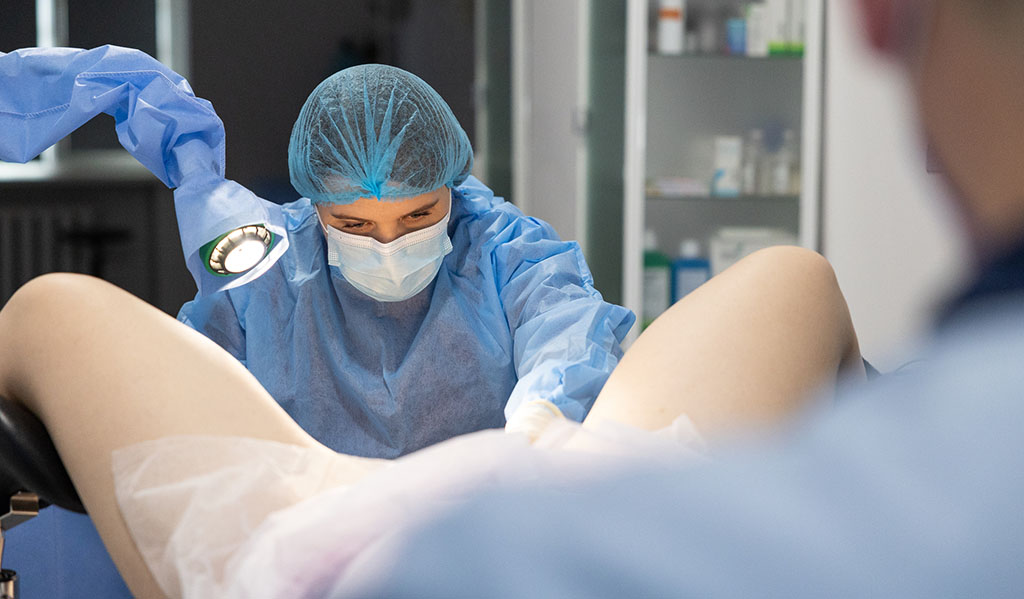
As with any other treatment or surgery, the procedures for a designer vagina come with its own potential risks, depending on the patient’s requirements and the surgeon’s expertise. Below are some potential risks and how to prevent them.
1. Infection
Any surgical procedure carries the risk of infection. Bacteria can enter through incisions, leading to localized or systemic infections.
Prevention: Follow post-operative care instructions meticulously, including the use of prescribed antibiotics and maintaining proper hygiene.
2. Bleeding and Hematoma
Excessive bleeding during or after surgery can lead to hematoma, where blood accumulates in the tissue.
Prevention: Surgeons take measures to minimize bleeding, but patients should avoid blood-thinning medications and resume activities only after being allowed by their doctor.
3. Scarring
Surgical incisions can result in visible scars, which might be more noticeable in some individuals.
Prevention: Surgeons use techniques to minimize scarring, but post-operative care, including the use of scar creams or silicone sheets, can help improve scar appearance.
4. Pain and Discomfort
Pain and discomfort are common after surgery. Some women may experience prolonged or severe pain.
Prevention: Pain is typically managed with prescribed medications, and patients should follow all post-operative instructions to minimize discomfort.
5. Anaesthesia Complications
Adverse reactions to anesthesia can occur, including allergic reactions or complications related to anesthesia administration.
Prevention: Anesthesia is administered by trained professionals, and a thorough pre-operative assessment helps minimize these risks.
6. Wound Healing Issues
Problems such as delayed healing, wound dehiscence (opening of the wound), or necrosis can occur.
Prevention: Proper pre and post-operative care and avoiding activities that stress the healing tissue are crucial for optimal recovery.
7. Changes in Sensation
Some women may experience changes in genital sensation, including numbness or hypersensitivity.
Prevention: Discuss potential sensory changes with your surgeon and understand that some changes may be temporary or permanent.
8. Unsatisfactory Results
The outcome may not always meet patient expectations, leading to dissatisfaction or the need for revision surgery.
Prevention: Clear communication with the surgeon about desired outcomes and realistic expectations can help align results with patient goals.
Important Considerations
- Understanding the procedure’s limits is crucial for realistic expectations. Discuss your goals with your surgeon to clarify what the procedure can and cannot achieve.
- Following post-operative care instructions is essential for healing and reducing complications. Adhere to activity restrictions hygiene guidelines, and attend all follow-up appointments.
- Designer vagina procedures can be expensive and are often not covered by insurance. Be aware of the total costs, including potential follow-up care or revision surgeries.
- Surgery can affect self-esteem and body image. Consider talking to a counsellor to address any emotional concerns before and after the procedure.
- Pre-existing health conditions can impact surgery outcomes. Provide your full medical history to your surgeon and discuss any health concerns.
- Some effects of the surgery may only appear long after the procedure. Discuss long-term outcomes and maintenance with your surgeon to be prepared for the future.
Alternatives to Surgery for Designer Vagina
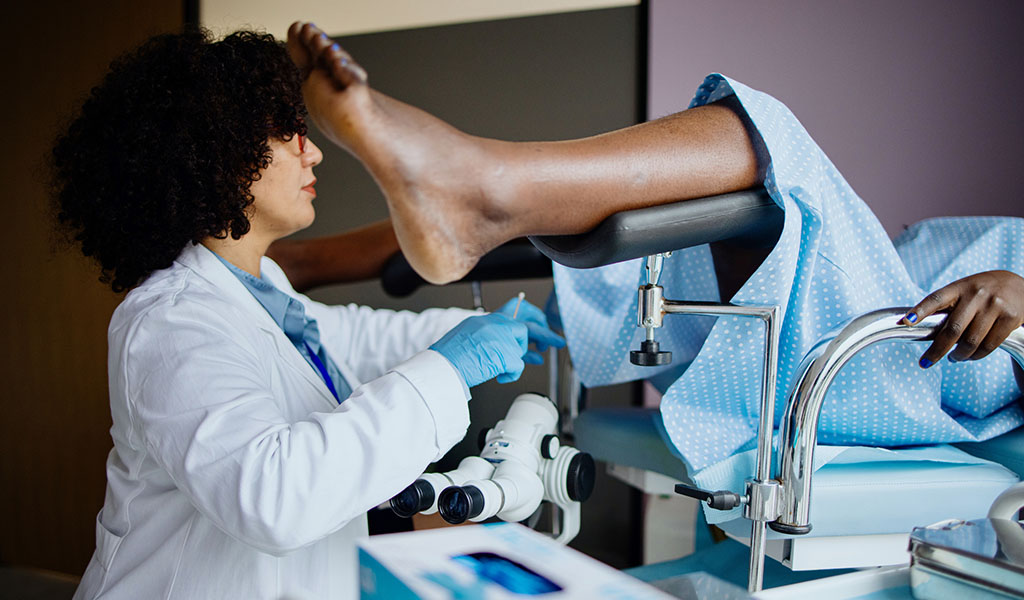
For those seeking aesthetic or functional improvements in the genital area but prefer non-surgical options, several alternatives to surgical procedures can offer satisfying results.
These alternatives include:
1. Non-Surgical Aesthetic Treatments
Vaginal Rejuvenation with Radiofrequency
- ThermiVa uses radiofrequency technology to heat and tighten vaginal tissues, promoting collagen production and improving vaginal tone and elasticity. It is often used to enhance aesthetic appearance and address mild to moderate vaginal laxity.
- Benefits: Non-invasive, minimal discomfort, and no downtime. Results typically improve gradually over several sessions.
Vaginal Rejuvenation with Laser Therapy
- Laser treatments stimulate collagen production and improve vaginal tightness and appearance. Laser therapies, such as FemiLift or erbium lasers, are used to resurface and rejuvenate vaginal tissues.
- Benefits: Minimal invasiveness, quick recovery, and effective for improving vaginal texture and tightening.
2. Pelvic Floor Exercises
Kegel Exercises
These involve regularly contracting and relaxing the pelvic floor muscles to strengthen them. This can help improve vaginal tone and support, particularly after childbirth.
- Benefits: No cost, easily performed at home, and can enhance muscle control and sexual satisfaction.
Advanced Pelvic Floor Therapy
This involves supervised exercises and techniques, often guided by a physical therapist specializing in pelvic health. Examples include the use of vaginal weights and cones, biofeedback therapy and electrical stimulation therapy.
- Benefits: Personalised therapy is effective for muscle strengthening and addressing functional concerns without surgery.
3. Hormonal Treatments
Estrogen Therapy
For postmenopausal women or those with hormonal imbalances, topical estrogen treatments can improve vaginal elasticity and moisture 7 . This approach helps in addressing symptoms like vaginal dryness and atrophy.
- Benefits: Non-invasive, improves vaginal health, and alleviates symptoms of vaginal dryness and discomfort.
4. Fillers and Injectables
Hyaluronic Acid Injections
Hyaluronic acid, commonly used in cosmetic dermatology, can be injected into the labia majora to restore volume and smooth out irregularities.
- Benefits: Minimally invasive, provides immediate results, and requires little to no downtime.
Each of these alternatives offers unique benefits and is suitable for different needs and preferences. Consulting with a qualified healthcare provider will help determine the most appropriate non-surgical option based on individual goals, concerns, and health conditions.
Professional Treatments For Designer Vagina

At Alinia Labiaplasty NYC, we offer a full range of vaginal rejuvenation procedures to help you achieve your desired “designer vagina.” Whether you’re considering labiaplasty, vaginoplasty, or any other procedure, our experienced team is here to guide you. Schedule an appointment today to discuss your genital health and explore the best options for you.
References
- Green FJ. From clitoridectomies to ‘designer vaginas’: The medical construction of heteronormative female bodies and sexuality through female genital cutting. Sexualities, Evolution & Gender. 2005 Aug 1;7(2):153-87.
- Rajshekhar S, Thiagamoorthy G, Cardozo L. Vaginal rejuvenation: improving sex by design?. Obstetrics, Gynaecology & Reproductive Medicine. 2018 Nov 1;28(11-12):368-70.
- Tepper OM, Wulkan M, Matarasso A. Labiaplasty: anatomy, aetiology, and a new surgical approach. Aesthetic surgery journal. 2011 Jul 1;31(5):511-8.
- Cihantimur B, Aglamis O, Ozsular Y. 360 Genital fat transfer. Aesthetic Plastic Surgery. 2021 Dec;45(6):2996-3002.
- Furnas HJ, Canales FL. Vaginoplasty and perineoplasty. Plastic and Reconstructive Surgery–Global Open. 2017 Nov 1;5(11):e1558.
- Konaç A. A 7-Year Retrospective Analysis of Hymenoplasty: Profiles From a Specialized Gynecological Cosmetic Surgery Practice. Aesthetic Surgery Journal. 2024 Mar 12:sjae056.
- Krause M, Wheeler TL, Snyder TE, Richter HE. Local effects of vaginally administered oestrogen therapy: a review. Urogynecology. 2009 May 1;15(3):105-14.
